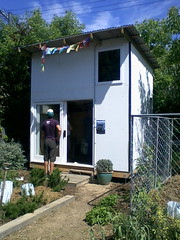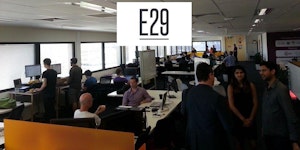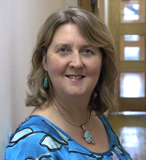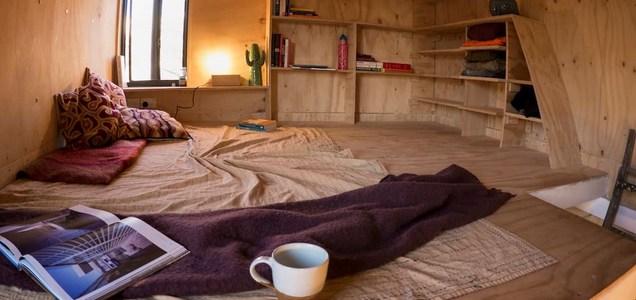Friday, October 30, 2015
Digital Inclusion or Occlusion?
Greetings from the National Library of Australia where I am attending the Canberra "Digital Inclusion Manifesto Workshop" by GoDigi. I am not entirely convinced of the need or aims of the GoDigi initiative. In 1994 the Australian Computer Society lobbied Australian governments for digital literacy initiatives ("Vision for a Networked Nation"), the response included provision of Internet access through libraries, schools and other community facilities. More recently a "Foundation to Year 10 Australian Curriculum: Technologies" was endorsed by all Australian State and Territory Ministers for Education for use in all Australian schools. In 2015 Internet access and literacy should be routine.
Where there are those who can't use the Internet, it is a failing in the education system and a matter for government policy, not a volunteer effort. Also those who can't afford the Internet may have other priorities, such as food, shelter and medicine. The experience of the OLPC project, which aimed to provide a low cost computer for education, but instead diverted scarce resources from higher educational priorities is a lesson that needs to be heeded.
Before looking to others to provide a more inclusive Internet, GoDigi need to do their homework. Their web page scores only 69 / 100 for speed on the Google Page Speed Insights and 0 / 100 (the lowest possible score) on the W3C mobileOK Checker.
Wednesday, October 28, 2015
Digital Inclusion at the National Library in Canberra This Friday
Helen Milner OBE, CEO of the Tinder Foundation will be speaking at the Canberra Digital Inclusion Manifesto Workshop, 10:30am, 30 October 2015 at the National Library of Australia. This will be followed by a public lecture by Helen on "Leaving no one behind: Can Australia be truly a digital nation? Stories from the UK", at 1pm.
ps: The Tinder Foundation is a UK not-for-profit organization helping with digital literacy and access for the community. Not to be confused with Tinder the dating App. ;-)
"In Australia, there are 3.7 million people who have never used the internet. On top of this, many Australians who do have internet access, are not confident enough to do the basics. To become a truly leading, inclusive and global digital nation we need everyone to become confident internet users by 2020."I suggest an aspect of digital literacy which needs to be addressed in Australia is the data use of on-line applications. This particularly impacts remote users of the NBN Interim Satellite Service, with the so called "Data Drought". Users find their small data allocation is soon used up on day to activities, so that their children then can't access on-line education. This will remain a problem even with the new NBN "Sky Muster" satellite.
ps: The Tinder Foundation is a UK not-for-profit organization helping with digital literacy and access for the community. Not to be confused with Tinder the dating App. ;-)
a
not-for-profit social enterprise that makes good things happen with
digital technology. Established in December 2011 as a staff-owned
mutual, our 40-strong team supports a network of 5,000 local community
partners and works with hundreds of national organisations. - See more
at: http://www.tinderfoundation.org/about#sthash.6yNlAjnp.dpuf
a
not-for-profit social enterprise that makes good things happen with
digital technology. Established in December 2011 as a staff-owned
mutual, our 40-strong team supports a network of 5,000 local community
partners and works with hundreds of national organisations. - See more
at: http://www.tinderfoundation.org/about#sthash.6yNlAjnp.dpuf
a
not-for-profit social enterprise that makes good things happen with
digital technology. Established in December 2011 as a staff-owned
mutual, our 40-strong team supports a network of 5,000 local community
partners and works with hundreds of national organisations. - See more
at: http://www.tinderfoundation.org/about#sthash.6yNlAjnp.dpuf
Monday, October 26, 2015
Design Flaw in Queensland OneSchool Student Protection Module
The Deloitte report "Queensland Department of Education and Training: OneSchool – Investigation into the 2015 failure of the OneSchool Student Protection Module" (16 October 2015) provides an excellent analysis of the response to a serious fault in a contemporary software system. However, there appears to be a fundamental
flaw in the design of the OneSchool system which is not addressed by the report and remains in the system. Queensland school children remain at risk as a result.
The OneSchool SPM is designed to allow teachers to report possible child abuse to the relevant authorities. A fault in the software resulted in 644 reports not being forwarded to the police. Deloitte were commissioned by the Queensland Minister for Education to "to assist the Department of Education and Training (DET) with a review of the Student Protection Reporting Module in OneSchool". Deloitte have provided a good description of the problem, how it was found and fixed and also a reconciliation to verify that all reports are now accounted for. However, this will not be sufficient to prevent a similar problem occurring in the future.
The OneSchool "submission protection" function (shown in Figure 4.2 page 18 of the Deloitte report), shows a purely one way process. The system sends email, to Department of Communities, Child Safety and Disability Services (DCCSDS), or the Queensland Police Service (QPS). There is no provision for the system to verify the report was received. Therefore a similar problem could occur again, in the OneSchool system, in the email system, or in the systems of the DCCSDS or QPS and it would remain undetected.
The OneSchool system needs to be modified so that there is positive acknowledgment of the receipt of every report by the agencies it was sent to. As it involves child safety, OneSchool is a "Safety Critical System", but does not appear to have been designed to the required standard.
The OneSchool SPM is designed to allow teachers to report possible child abuse to the relevant authorities. A fault in the software resulted in 644 reports not being forwarded to the police. Deloitte were commissioned by the Queensland Minister for Education to "to assist the Department of Education and Training (DET) with a review of the Student Protection Reporting Module in OneSchool". Deloitte have provided a good description of the problem, how it was found and fixed and also a reconciliation to verify that all reports are now accounted for. However, this will not be sufficient to prevent a similar problem occurring in the future.
The OneSchool "submission protection" function (shown in Figure 4.2 page 18 of the Deloitte report), shows a purely one way process. The system sends email, to Department of Communities, Child Safety and Disability Services (DCCSDS), or the Queensland Police Service (QPS). There is no provision for the system to verify the report was received. Therefore a similar problem could occur again, in the OneSchool system, in the email system, or in the systems of the DCCSDS or QPS and it would remain undetected.
The OneSchool system needs to be modified so that there is positive acknowledgment of the receipt of every report by the agencies it was sent to. As it involves child safety, OneSchool is a "Safety Critical System", but does not appear to have been designed to the required standard.
Sydney Silicon Harbor Proposal
| ATP Sydney 1998 |
In 2002 design students and staff from the "new" Bauhaus Dessau in Germany, visited Sydney and undertook a planning exercise for the area now known as the bays precinct. They were interested in the role of computers and telecommunications in the city, so I gave them a talk on Canberra's fibre optic broadband system entitled Canberra: Encircled by Light. As a footnote to this I proposed reusing the old Canberra power-station as a hi-tech centre.
The results of the Bauhaus study were published in 2003, as the book "Serve City: Interactive urbanism
Sydney hi-tech company Atlassian have suggested that the existing Australian Technology Park (ATP) which is in a repurposed railways workshop in Redfern would be more more viable. It does seem odd that the NSW government would be proposing establishing a new tech park, when they already have one languishing on the other side of the city.
In my closing address to the 1998 Information Industry Outlook Conference, I used the ATP to illustrate how Australia could create a cultured image to market its information industries. Rather than Silicon Valley, I suggested that Australia should model its hi-tech start-up strategy on Cambridge (England) and the so-called "Cambridge phenomenon".
An area which is growing organically into a hi-tech center is around UTS in Ultimo. This has the new UTS Innovation Building and the adjacent Fishburners Co-working Space.
Sunday, October 25, 2015
Not-So-Tiny 90 Day House
 The 90 Day House was one of three project invited for a special presentation at Innovation ACT in Canberra last Wednesday. The prototype house is available on AirB&B as "Tiny House with Loft, O'Connor, ACT, Australia". It is just a few streets from where I live, so I walked over to the open day on Sunday.
The 90 Day House was one of three project invited for a special presentation at Innovation ACT in Canberra last Wednesday. The prototype house is available on AirB&B as "Tiny House with Loft, O'Connor, ACT, Australia". It is just a few streets from where I live, so I walked over to the open day on Sunday.This is a polystyrene core plywood wall construction building which is almost a cube. The emphasis is on ease of construction by DIYers. There is maximum use of standard size sheets of plywood, so there is the minimum of cutting and wastage.
The resulting building looks backyard shed, which may not appeal to everyone's taste, but acts as a 3D instruction manual. You can look at the building, see all the fixings, how it is put together and think "Yes, I could do that". The final result could be prettied up with some paint and cover-strips.
This building looks much like those from the Tiny House / Small House Movement, but is not intended to be mobile.
Vancouver had a Tiny House Building Workshop Series in 2014 (when I was visiting for a conference) but that is now over. Perhaps what might suit Australia is a blended Vocational Education and Training (VET) course. The idea would be that you would study some theory on-line and then get some practical experience helping build someone else's house. You would then be qualified to build your own and show others how to do it.
Apart from regulations about building, there are legal issues with what land you can put such a home on. The Co-housing Handbook discusses some of the benefits and pitfalls with community construction, but like most such Cohousing Handbooks, is from a US perspective.
Thursday, October 22, 2015
Documentary on Young Women in STEM
Greetings from the Canberra Innovation Network (CBRIN) offices, where I am attending the screening of the documentary "Big Dream Movement" about seven young women in STEM (Science, Technology, Engineering and Maths). The first was about Cassidy Williams, but I had difficulty understanding her Iowa accent and it was all a bit too "TED Talk". I found I could understand Martha Chumo from Kenya better. One of the later segments had a very disturbing scene where all the students of what appeared o be a school stood to first recite a pledge of allegiance and then some sort of religious prayer, coming out of a public address system (it all looked something from a totalitarian state). The segments about Asya Mohamed Al Jabri & Marwa Saud Al Habsi were a little less frantic and provided a nice change of pace. The documentary is informative, fun and would provide role models for young women to see it is okay to do technology (as much as an old male like me can tell). The documentary is glossy and predominantly US in outlook, but not annoyingly so. Some of the spontaneous scenes appear rehearsed, like a fictional documentary. One problem is that it is orientated to the "start-up" culture and it would be worth pointing out that there are still good STEM careers in traditional corporations and government.
Back to the Future Day: How Much is Now Real?
Some clever marketing person created "Back to the Future Day" to mark the day October 21, 2015 depicted in the 1989 movie "Back to the Future Part II". There were numerous media reports on how much of what was in the movie is now real. The biggest mistake in the move was the prevalence of fax machines, which have all but disappeared. Perhaps the biggest success was the depiction of a home with numerous large flat screen displays and video calls.
Now have and use:
Now have and use:
- Biometric locks
- Video calls
- Tablet computers
- Digitally networked police
- Headset glasses
- Hands-free games interface
- 3-D with no screen
- Self-lacing shoes
- Hoverboards
- Flying cars
- Time travel
Monday, October 19, 2015
Not The Real Thing
Last night I attended Tom Stoppard's "The Real Thing" at the New Theatre Sydney. This is well acted, directed and good set, but is just not one of Stoppard's better plays. At more than two hours, this play would benefit from having 30 minutes, and perhaps two characters, cut from it. Now I know what my tutor was on about when they sent back an essay marked: "some brilliant ideas but others not relevant to the topic, needs
to be edited down".
The Real Thing is about, well I am not exactly sure what it is about. A Stoppard play always takes work from the audience, with the same scene usually played several times from different perspectives. In this case there is a play within a play and scenes played over twice, once as the play and then the "real thing". But it all looked like a play to me (a play by a playwright about a playwright about actors being acted).
The acting was to the usual high standard of the Ne Theatre, the set a little sparse but having the right atmosphere, consumes excellent. Ainslie McGlynn is outstanding as the conflicted Annie. But this is a play which needs an English cast, of the people you usually see on Midsummer Murders, and doesn't really work in inner Sydney. This is David Williamson's Emerald City and Stoppard seems a little out of place here.
The Real Thing, is on at the New Theatre Sydney until 7 November 2015.
The Real Thing is about, well I am not exactly sure what it is about. A Stoppard play always takes work from the audience, with the same scene usually played several times from different perspectives. In this case there is a play within a play and scenes played over twice, once as the play and then the "real thing". But it all looked like a play to me (a play by a playwright about a playwright about actors being acted).
The acting was to the usual high standard of the Ne Theatre, the set a little sparse but having the right atmosphere, consumes excellent. Ainslie McGlynn is outstanding as the conflicted Annie. But this is a play which needs an English cast, of the people you usually see on Midsummer Murders, and doesn't really work in inner Sydney. This is David Williamson's Emerald City and Stoppard seems a little out of place here.
The Real Thing, is on at the New Theatre Sydney until 7 November 2015.
Sunday, October 18, 2015
Talks on Open Source at Microsoft in Sydney
Steven Edouard, Felix Rieseberg and Rita Zhang will speak on "Open source at Microsoft" at the Sydney Linux User Group (SLUG) meeting, 6pm 23 October 2015 in Sydney. The SLUG meetings are free and always entertaining (it is worth attending, just to see the venue: Google Sydney HQ). While in Sydney, Steven, Felix and Rita are also speaking at the .NET user group, Docker Meetup and .
"As you may (or may not) know, nowadays Microsoft is a big supporter of open source, so much so, that Microsoft has become one of the biggest contributors to the Linux kernel.
In this talk we'll discuss how we 'do' open source at Microsoft, including some projects we've partnered with such as Docker, Deis, Flynn, Cloud Foundry, Ember.js and a variety of others. We'll show off some of the open source integrations we've done and how you can leverage some of this open work in your own projects. Join our San Francisco-based open source engineering team for this interesting discussion on our new direction and learn more about open source at Microsoft."
Saturday, October 10, 2015
PM's Use of Non-government Email Okay
Yesterday I was interviewed by ABC TV and The Australian, on the Prime Minister, Malcolm Turnbull's use of non-government email services. Verisons of this also appeared in the International Business Times, CelebCafe, . I said this was okay, as it was not used for unclassified non-sensitive information and the usual record-keeping was done. I was surprised this caused so much fuss in the media (more of a ripple in a tea cup than a storm) and I suggested the overloading of the NBN Interim Satellite Service was a more important issue.
Thursday, October 08, 2015
Will Australia rejoin the World on Climate Change
Greetings from the Australian National University in Canberra, where John Gummer (Lord Deben), Chairman of the UK Climate Change Committee and Special Advisor to the United Nations on Carbon Pricing, is speaking on "Will Australia rejoin the World on Climate Change?". He criticized Australia's proposals of greenhouse gas emissions for the Paris Summit, for using a different baseline to make them look good. He also criticized Australia's linking its response to other countries, especially that of developing countries.In contrast he pointed to the UK carbon budget.
Lord Deben argued that because the effect of global warming will global it is in the interests of rich countries to take action. I am not sure that rational approach will necessarily produce the desired effect.
Wednesday, October 07, 2015
Start You High Tech Business in Canberra
 The ACT Government, in partnership
with local universities, are training former public servants and
universality students in how to set up a new business to commercialize
an idea. The Entry29 Co-working space is holding a free Canberra Tech Startup Open Day, at its Canberra city office on the afternoon of Friday, 16 October 2015. If you are curious about all the talk of new high tech Silicon Valley type company start-ups, it is a good opportunity to come along and see where it is now happening. You don't need to be a computer genius to start a new venture, in fact it helps if you are not (I mentor start-ups and judge hacker competitions). You can get a free ticket, if you are just interested, already have an idea or are working on your business venture.
The ACT Government, in partnership
with local universities, are training former public servants and
universality students in how to set up a new business to commercialize
an idea. The Entry29 Co-working space is holding a free Canberra Tech Startup Open Day, at its Canberra city office on the afternoon of Friday, 16 October 2015. If you are curious about all the talk of new high tech Silicon Valley type company start-ups, it is a good opportunity to come along and see where it is now happening. You don't need to be a computer genius to start a new venture, in fact it helps if you are not (I mentor start-ups and judge hacker competitions). You can get a free ticket, if you are just interested, already have an idea or are working on your business venture. ps: A "co-working space" is a shared office where new business ventures can rent cheap space while setting up.
Tuesday, October 06, 2015
Change! Combining analytic approaches with street wisdom
Greetings from the Australian National University in Canberra, where a panel discussion on "Change" is being recorded for broadcast on ABC Radio National Big Ideas. The panelists, Dee Madigan, Mark Stafford Smith, Grant Wardlaw, Lindell Bromham and Gabriele Bammer are authors of the book "Change! - Combining Analytic Approaches with Street Wisdom", published by ANU Press. The book is available free Online.
Dee Madigan talked about how advertisers were using neurological research to find out exactly how emotions motivate consumers.
The panel then moved on motivations to act on climate change. There was discussion of if the analysis techniques developed by intelligence agencies for the cold war are applicable to today's terrorist groups. It seems to me that the terrorists have learned to use social media, but the military have not and are unhappy that their new enemy is not playing by the rules. There was a comment that universities were not good at complex problems. But in engineering and computer science we now teach students to work in teams and deal with human issues.
Part 2 Perspectives
Dee Madigan talked about how advertisers were using neurological research to find out exactly how emotions motivate consumers.
The panel then moved on motivations to act on climate change. There was discussion of if the analysis techniques developed by intelligence agencies for the cold war are applicable to today's terrorist groups. It seems to me that the terrorists have learned to use social media, but the military have not and are unhappy that their new enemy is not playing by the rules. There was a comment that universities were not good at complex problems. But in engineering and computer science we now teach students to work in teams and deal with human issues.
Table of Contents
Part 1 Introduction
Part 2 Perspectives
- 2. A Politician’s View of Change
- 3. Responding to Global Environmental Change
- 4. Teleology, Cyclicality and Episodism: Three competing views of change in international relations
- 5. Change is Central to Sociology
- 6. Advertising and Change: Message, mind, medium, and mores
- 7. Media Advocacy for Public Health
- 8. Is the Intelligence Community Changing Appropriately to Meet the Challenges of the New Security Environment?
- 9. Evolutionary Change: Nothing stands still in biology
- 10. Demographic Change: How, why and consequences
- 11. Conceptual Change and Conceptual Diversity Contribute to Progress in Science
- 12. Mental Illness and Psychiatry Have Seen Substantial Change—But There is Still a Long Way To Go
- 13. Education Reform: Learning from past experience and overseas successes
- 14. Ten Lessons from Changing Policing Organisations
- 15. Change Management in Materials Conservation
- 16. Change and Continuity in Anthropology: Examples from Christianity and from the situations of contemporary Indigenous Australians
- 17. Learning about Change Through Industrial Open Innovation in the Fast‑Moving Consumer Goods Sector
- 18. Increasing Interest in the Economic Determinants of Structural, Technological and Climate Change
- 19. Visual Fine Art: Documenting change, influencing change, and subjected to change
Subscribe to:
Comments (Atom)



